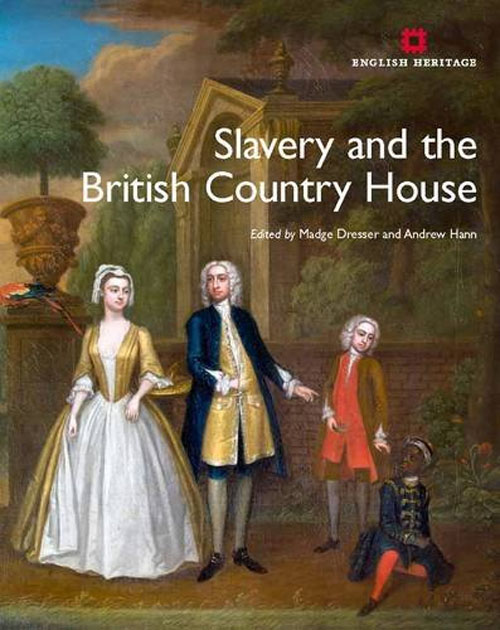Slavery and the British Country House
Review

Slavery and the British Country House, Madge Dresser and Andrew Hann, eds, English Heritage, 2013, hardback, ISBN 9781848020641.
Since the story of Dido Elizabeth Belle hit the big screens in 2013 this timely, accessible and scholarly multi-authored volume by English Heritage, whose publication coincided with the year of the film's release, will assist those whose curiosity has been aroused by this extraordinary example of the intimate association of transatlantic slavery with an English country house and its implications for relating the site to its historical context. The mixed race, natural daughter of an English sea captain and an enslaved African woman from a West Indian plantation, Dido was brought up by her childless, beneficent, great uncle, Lord Mansfield and his wife at Kenwood House in landscaped parkland north of the city of London and was depicted in this setting in a celebrated painting once attributed to Zoffany, with her cousin Lady Elizabeth Murray, another recipient of the Mansfield's beneficence.
The contention of Caroline Bressey in her contribution to this welcome publication of her case studies of Kenwood House and Osborne House contesting the political legacy of slavery in England's country houses is that the enduring narrative presented at Kenwood, even after the bicentenary commemoration of the abolition of the British slave trade in 2007, still fails to weave sensitively ‘the complex histories of race, slavery, injustice and identity' into ‘the narrative of the house as you journey through'. She similarly raises a host of questions about the representation of Queen Victoria's employment of Indian servants and the representation of the African diaspora at Osborne House and concludes that ‘challenging the whiteness of British country houses requires a reconfiguration of British history' in order that ‘its dominant discourses should recognise the complexities and legacies of slavery, colonial expansion and empire, not only abroad, but at home'.
Other contributors raise issues in relation to West Country houses; the rural retreats of Liverpool slave owners; Normanton Hall; Bolsover Castle and Brodsworth Hall; , Marble Hill, Northington Grange and Dodington House. In other articles Nicholas Draper reveals the values and limitations of the records of the Slave Compensation Commission as evidence of the links between slave ownership and the English country house, whilst Simon Smith investigates slavery's heritage footprint in Britain from the perspective of the ownership of prestige residences in Britain among St Vincent's plantocracy in the two decades between 1814-34.
Challenging conclusions are offered throughout this illuminating volume which have implications for the construction of narratives in other historical contexts. It remains to be seen, for example, whether ethnic and cultural diversities will be more effectively represented in the current commemoration of the centenary of the First World War. Moreover it is to be hoped that English Heritage and other heritage custodians will hold further conferences of the kind which generated the contributions for this invaluable reappraisal of one significant interpretive issue so that the historical interpretation of heritage sites in relation to other major historical themes can be more fully explored.

